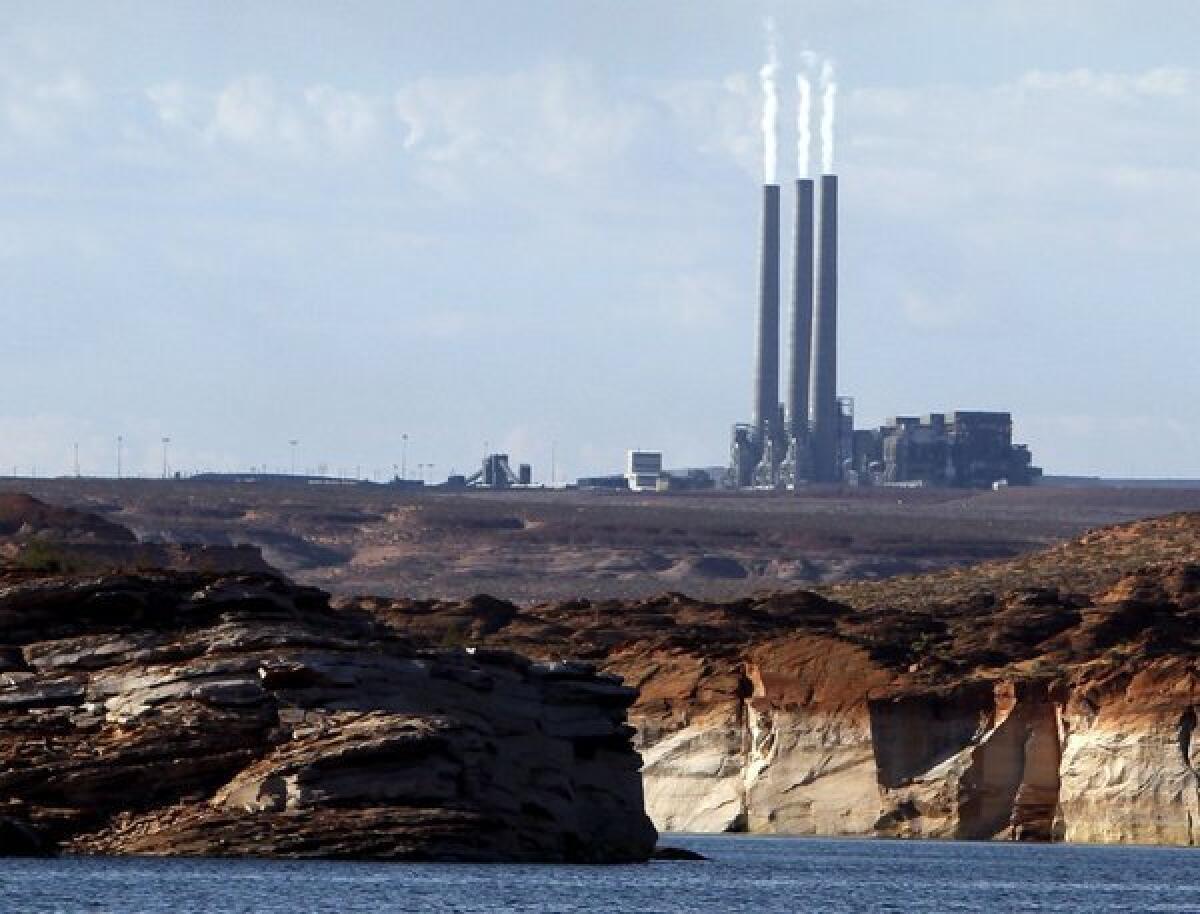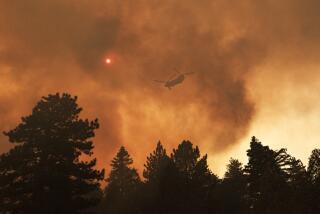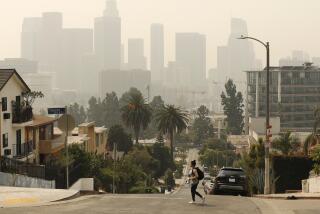Carbon dioxide in atmosphere did not break 400 ppm at Hawaii site

- Share via
Carbon dioxide measurements in the Earth’s atmosphere did not break the symbolic milestone of 400 parts per million at a Hawaiian observatory last week, according to a revised reading from the nation’s climate observers.
The National Oceanic and Atmospheric Administration (NOAA) revised its May 9 reading at the Mauna Loa observatory in Hawaii, saying it remained fractions of a point below the level of 400 ppm, at 399.89.
Individual readings at any of NOAA’s observation stations are subject to revision on a regular basis. Sometimes a data point is moved to another set when the sets are adjusted for the international date line.
While scientists and environmentalists have used the daily milestone to highlight the buildup of greenhouse gases generated by human activities, it’s the rate of rise that is most important.
That rate, measured by the Keeling Curve, shows atmospheric CO2 levels are rising at unprecedented rates, driven largely by the burning of fossil fuels over the past two centuries. The curve, pioneered in 1958 by scientist Charles D. Keeling, is the longest-running tally of carbon dioxide levels in the atmosphere and is maintained by the Scripps Institution of Oceanography in San Diego. Readings there hit 399.46 Saturday.
The weekly average reading at Mauna Loa was 399.52 last week, up nearly 22 points from a decade ago, according to the NOAA.
Many scientists have warned that carbon dioxide readings must be brought down to 350 ppm to avoid severe climate impacts and stall “feedback loops” that will exacerbate the rise.
Current ratios of carbon dioxide in the Earth’s atmosphere remain at levels not seen in more than 3 million years, when sea levels were as much as 80 feet higher than current levels.
For the previous 800,000 years, CO2 levels never exceeded 300 ppm, and there is no known geologic period in which rates of increase have been so sharp. The level was about 280 ppm at the advent of the Industrial Revolution in the 18th century, when the burning of fossil fuels began to soar.
“I wish it weren’t true, but it looks like the world is going to blow through the 400-ppm level without losing a beat,” said Scripps geochemist Ralph Keeling, who has taken over the Keeling curve measurement from his late father. “At this pace we’ll hit 450 ppm within a few decades.”
The saw-tooth pattern of the incline reflects small seasonal variations within the long-term upward trend. Generally, the micro-peak in the curve comes in May.
“The 400-ppm threshold is a sobering milestone and should serve as a wake-up call for all of us to support clean-energy technology and reduce emissions of greenhouse gases before it’s too late for our children and grandchildren,” said Tim Lueker, an oceanographer and carbon cycle researcher who is a longtime member of the Scripps CO2 Group.







